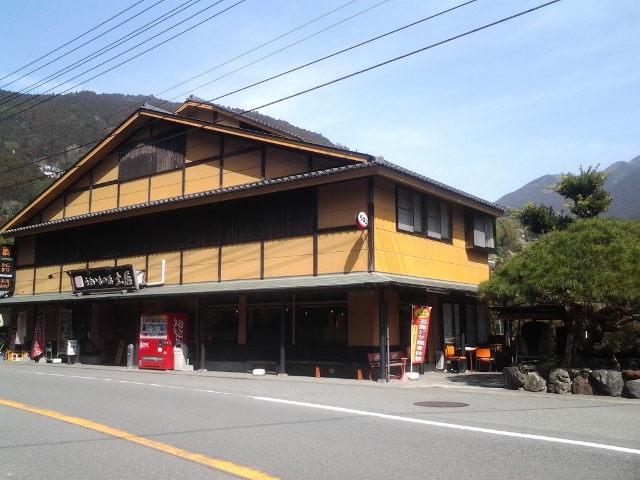
Sticky pizza to taste at the Ichikinke restaurant in the mountains. You can easily experience it because you start with the dough. (Make a reservation by the day before). The sauce made with local tomatoes is topped with local vegetables. The cheese pizza made with local honey is also popular.
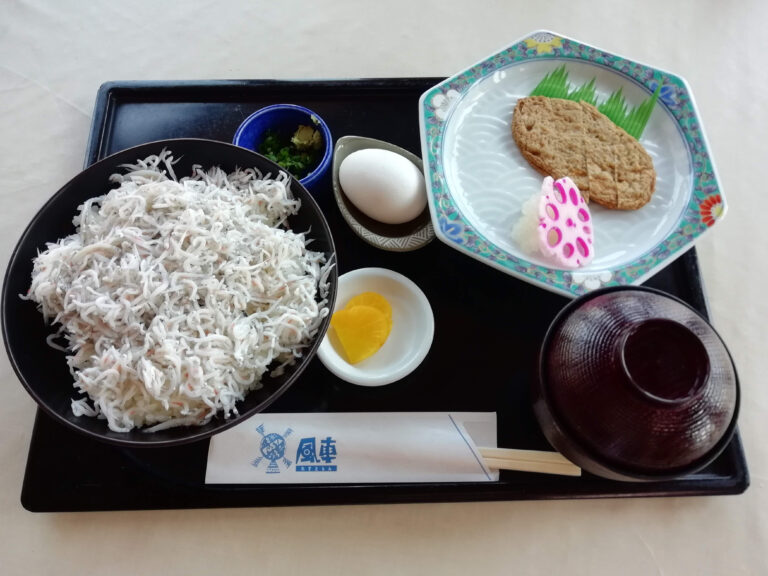
A restaurant in the roadside station Seto Agricultural Park, built along the Sadamaki Melody Line on the Sadamaki Peninsula. The most popular of the menu, Chirimen-don, is 1100 yen with Jakko Tenten. The Ikata-cho specialty crepe is directly sent from the crepe factory, and it is delicious when you put the hot spring eggs that come with them on top of the crepe, then mixed with wasabi and soy sauce.
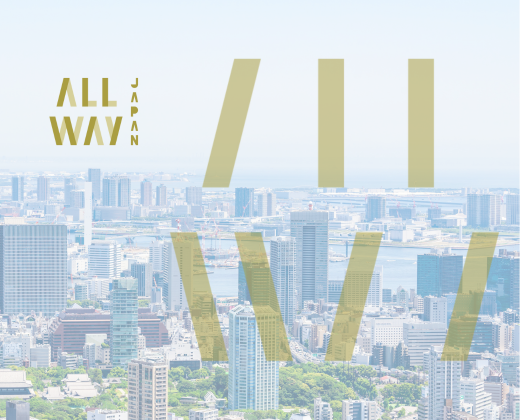
At Marinatei, which is located on the far western tip of Shikoku, the Sadamisamishima Peninsula, you can enjoy dishes that make use of the seafood caught in the Hoyo Strait that spreads in front of you. An at-home shop cooked by a cook shopkeeper who is also the son of a fisherman. Sashimi made with fresh fish is exquisite. In particular, full-boiled rice bowl is eaten with special sauce. There are many repeaters, and on holidays, there are many customers who walk from afar. In addition, the specialty Jakoten and Jakko croquettes, which have been introduced many times on TV, are popular local products since ancient times. Souvenir is also possible. Full-boiled rice bowl 1630 yen, Jakoten (takeaway) 850 yen for 5 pieces, Jakoten (takeaway) 850 yen for 5 pieces.
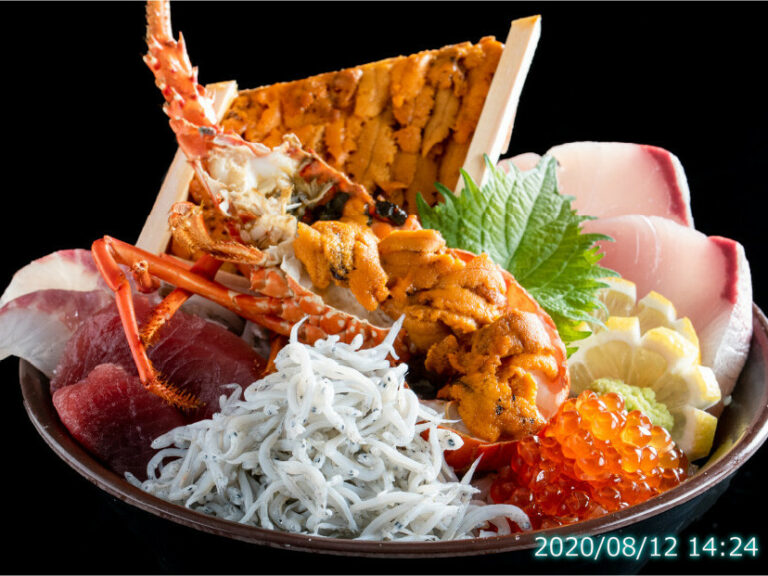
One of the "Minato Oasis" registered by the Ministry of Land, Infrastructure, Transport and Tourism, located in Misaki Port, near the tip of the Sadamisaki Peninsula, which protrudes very long into the Hoyo Strait. Inside and outside the facility, which incorporates the "Ishigaki" culture of Cape Sada, there are tourist information centers and cafes, Waku Waku Square and Umi Deck. The "Shirasu Shokudo", which looks out over the port of Misaki, has a full menu including a seafood bowl that uses fresh seafood caught in the surrounding area, as well as a set meal. In addition to live fresh fish and produce, as well as citrus jams and juices from Cape Sada are also sold at the "Shirasuma Park Hanahana", a direct sale place with a store of raw fish.
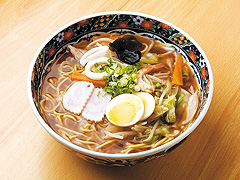
The pioneer of Yawatahama Champon, which has become a boom as a specialty of Yawatahama. Since its inception in 1948, it has kept its taste unchanged. Champon 600 yen features a light, mellow soup with exquisite soup made from katsuobushi, kelp, chicken gala and vegetables and not too thick soy sauce. The local people often order "Chanjo" 700 yen with champon rice and pickled items. A special champon with shrimp and squid is 700 yen. Ankake yakisoba 700 yen is also a popular menu.
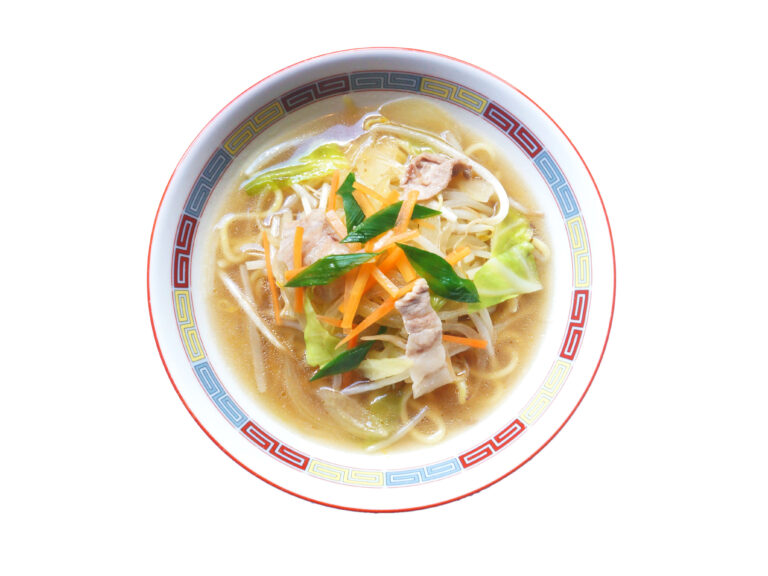
As the three houses of Yawatahama Champon, a long-established restaurant that has been loved by Hamakko for more than half a century. Champon 750 yen contains plenty of medium noodles, pork and vegetables in a chicken soy sauce soup that is simple but rich and umami. Grilled rice with a characteristic soy sauce sauce of 750 yen and a katsudon of 800 yen are also very popular.
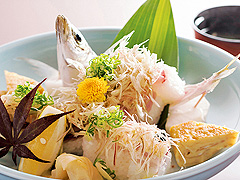
It boasts a dish made with fresh Uwa Sea seafood fried in the Yawatahama market. You can feel free to taste extravagant flavors such as sea bowl and seafood bowl. One push is the specialty dish of this restaurant, Ajinoki sushi. I'm glad that there are plenty of varied and affordable menus, such as set meals and daily lunch with nigiri sushi and tempura. It is also good to visit local dishes in the Nanyo region, such as snapper meat, which is mixed with raw egg sashimi and eaten over rice.
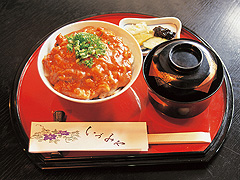
Kappo restaurant founded in the first year of Genroku (1688). The menu is varied, such as local dishes such as Iyo Satsuma 800 yen and monthly Kyokaze kaiseki cuisine 3000 yen ~. A dim sum lunch of 2000 yen limited to 20 meals is also popular. A reservation is required for kaiseki and dim sum lunch. If you use a private room, reservation is required.

A small shop, next to the Ryongsan-so, with a cafe and partly a small exhibition hall (art gallery) on the first floor and an art gallery on the second floor; a matcha set with matcha and seasonal Japanese sweets and kombucha, and a bit of a breath with 500 yen for coffee, etc.

There are a variety of products that are popular in the local area, such as Shigure, Tsukimado Mochi, and Zouzuki, Bunraku Nakaya Toman, Tamai-san's pickles, and Kajita-san's soy sauce. There is also a restaurant called Ozu General Tourist Information Center and an oil shop in the same facility.










